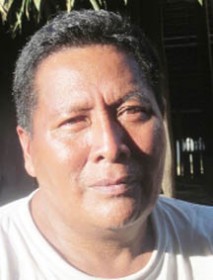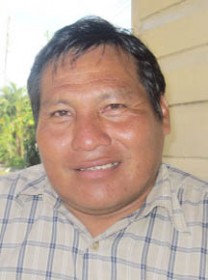Toshaos from two Amerindian communities in the Deep South Rupununi are concerned about the threat of mining and flooding to their livelihood and are calling for more information to be made available to them about the LCDS and other strategies.

“My main concern is the land title,” Ekufa Mewsha, Toshao of Parishara told Stabroek News. He said his community had applied for title to the lands that they had occupied since 2000 but he is yet to hear anything significant about the application. Mewsha said every time he makes enquiries at the Ministry of Amerindian Affairs, he is told that it is under consideration.
The toshao said that obtaining the title to the land is of paramount importance since he fears the incursion of logging and mining companies on the community lands. The Marudi mines are 10 miles from the village and as such he is particularly concerned about safeguarding the land resources for future generations. According to Mewsha the Amerindian Act stipulates that in order to process a land title application a village must have 150 residents. Parishara has 132 residents. “How can I get help as quickly as possible?” he asks, “We can’t wait, we have a right to the land.”
Another concern for the community is that its young men have been frequenting the mining area and returning to the community with marijuana. He said this is helping to fuel the increasing incidents of substance abuse among youth, both male and female. He said this habit has also spread to Aishalton, a neighbouring village, especially among its secondary school students.
Meanwhile, two months ago severe floods affected the community, destroying farms in low-lying areas and affecting livelihoods. Mewsha said the flood caught the residents by surprise since they were experiencing drought-like conditions and had cultivated the flat lands. However, he said the ministry responded to the community’s plight with a number of relief supplies.

Meanwhile, Paul Chekema, Toshao of Masakenari joins Mewsha in calling for more information to be disseminated, and explained, about the Amerindian Act, Protected Areas and the Low Carbon Development Strategy (LCDS). Chekema said there is the need for residents to be properly informed about the contents of the Act, adding that language is a major barrier to understanding and he believes that these important documents should be explained to communities in their native language, through the use of an interpreter. Chekema said while he has some limited knowledge about the LCDS and Protected Areas System he too could benefit from a more detailed explanation of these strategies. Chekema has been leader of the Region Nine community for the past nine years. He said that his people moved from Konashen to Gunns Strip before finally establishing themselves at Masakenari in 2000 which he said is better because of its altitude. He noted that all the lands are considered Wai Wai territory. The community is also part of the Protected Areas system established to safeguard its biodiversity area and to ward off threats from loggers and miners.
Masakenari has also instituted a management plan which is closely monitored by Conservation International (Guyana) in order to help them to maintain their traditional way of life. Members of the managing body are given a stipend for their work in the area. When the community was granted its land title in 2004, Chekema said that villagers took a decision to become involved.
Meanwhile, in April, the community of 220 persons was severely hit by the floods resulting in farms being destroyed and the loss of food to the community. However, they received food supplies from the ministry and though it was of great benefit Chekama said a need still exists for more supplies. He also told this newspaper that though a request was submitted to the ministry, to date there has been no response.
Chekema and Mewsha were part of a 37-member team that travelled to Georgetown to effect repairs to the roof of the Umana Yana.




